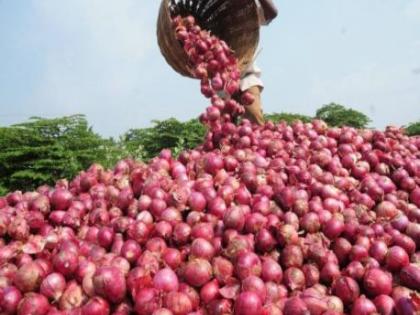Domestic Onion Prices Rise Amid Concerns Over Influx of Lower-Priced Egyptian Onions
By Amit Srivastava | Updated: October 26, 2024 08:47 IST2024-10-26T08:45:28+5:302024-10-26T08:47:06+5:30
With the lifting of India’s export ban, domestic onions have begun fetching favorable prices, creating a sense of optimism ...

Representative Image
With the lifting of India’s export ban, domestic onions have begun fetching favorable prices, creating a sense of optimism among farmers. However, the recent arrival of imported onions from Egypt in the Agricultural Produce Market Committee (APMC) markets has sparked concern among local producers. Farmers fear the influx of Egyptian onions, priced slightly lower than domestic produce, may impact their earnings, as these imports gain traction in the hospitality sector.
Currently, premium-quality onions are selling for ₹46 to ₹49 per kilogram in APMC’s wholesale market. On Saturday, October 26, around 25,760 sacks of onions entered the APMC’s onion-potato market, including an Egyptian shipment of approximately 25 tons. Market sources noted that around 1,100 bags of Egyptian onions—each weighing 25 kilograms—were available for sale. Priced between ₹40 to ₹42 per kilogram, these imported onions are perceived as more economical compared to the Indian and Maharashtra varieties, which sell at rates ranging from ₹10 to ₹50 per kilogram.
Traders report a marked difference in durability as well: while Indian summer onions remain fresh for five to six months, Egyptian onions last only one to two months, making them less suited for prolonged storage.
The wholesale market, not yet operating at full capacity, has seen prices rise up to ₹50 per kilogram. To capitalize on this, some traders are opting for Egyptian imports to increase profit margins. However, these imports are triggering financial losses for local growers, according to a trader at the APMC.
How to identifying local and imported onions?
Distinguishing Indian onions from their Egyptian counterparts is relatively simple. Indian onions have thicker layers, whereas Egyptian onions are thinner-layered, making them easy to tell apart. Furthermore, Egyptian onions are more susceptible to spoilage during transportation, a disadvantage noted by traders as they emphasize the importance of freshness for both local and imported onions.
Open in app